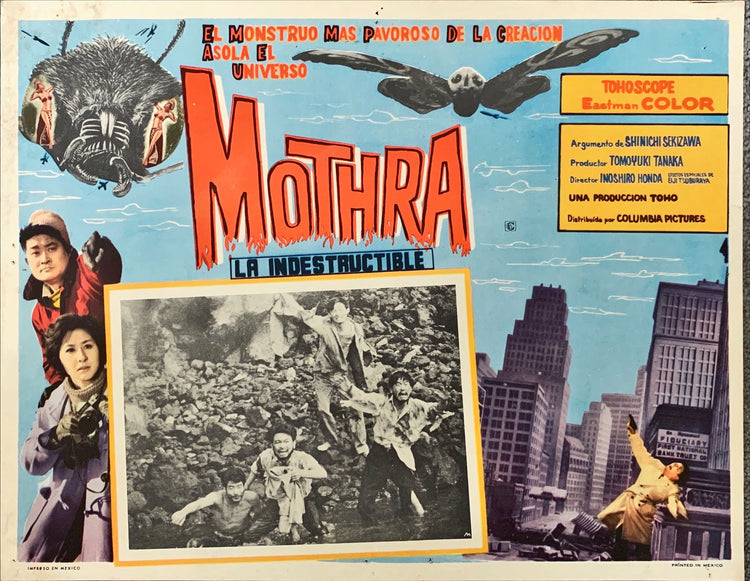Mothra (1962) Lobby Card - MX
- Regular price
-
518,00 kr - Sale price
-
518,00 kr
-
Hurry, only 1 item left in stock!
Couldn't load pickup availability
Shipping information
Use collapsible tabs for more detailed information that will help customers make a purchasing decision.
Ex: Shipping and return policies, size guides, and other common questions.
Returns information
Use collapsible tabs for more detailed information that will help customers make a purchasing decision.
Ex: Shipping and return policies, size guides, and other common questions.

Product Details
From the 1970's release of Mosura (released in the U.S. in 1962 as "Mothra"), the 1961 Ishiro Honda (billed as "Inoshiro Honda") Japanese Toho kaiju battling rubbery monsters science fiction (sci-fi) horror thriller ("Mightiest monster in all creation!"; "Ravishing a universe for love!"; "Incredible! Inconceivable!"; "World Wrecked as monster hunts human mates!"; "Fabulous! Fantastic! Two doll-sized beauties worshipped [sic] by a winged behemoth!"; "Based on a story by Shinichiro Nakamura, Takehiko Fukunaga and Yoshie Hotta"; "Special Effects by Eiji Tsuburaya") starring Mothra (the giant moth monster, on a mission to help save twin fairies), Frankie Sakai, Hiroshi Koizumi, Kyoko Kagawa, Ken Uehara, Emi & Yumi Ito (as the Twin Fairies)
Mothra (モスラ, Mosura) is a fictional monster, or kaiju, that first appeared in the 1961 film Mothra, produced and distributed by Toho Studios. Mothra has appeared in several Toho tokusatsu films, most often as a recurring character in the Godzilla franchise. She is typically portrayed as a colossal sentient larva (caterpillar) or imago, accompanied by two miniature fairies speaking on her behalf. Unlike other Toho monsters, Mothra is a largely heroic character, having been variously portrayed as a protector of her own island culture,[2] the Earth[3] and Japan.[4] Mothra's design is influenced by silk worms, their imagos, and those of giant silk moths in the family Saturniidae. The character is often depicted hatching offspring (in some cases, twins) when approaching death, a nod to the Saṃsāra doctrine of numerous Indian religions.[5]


